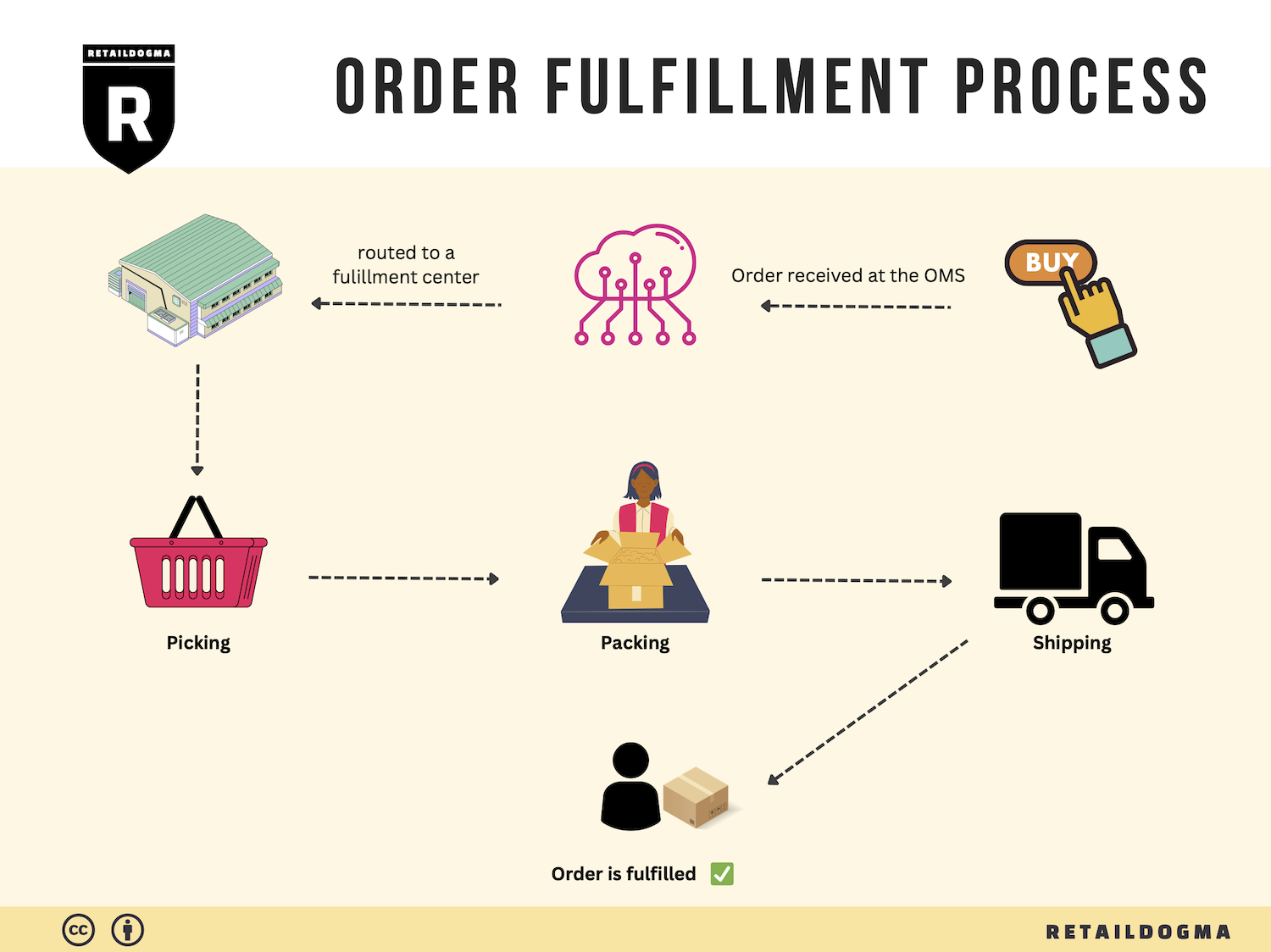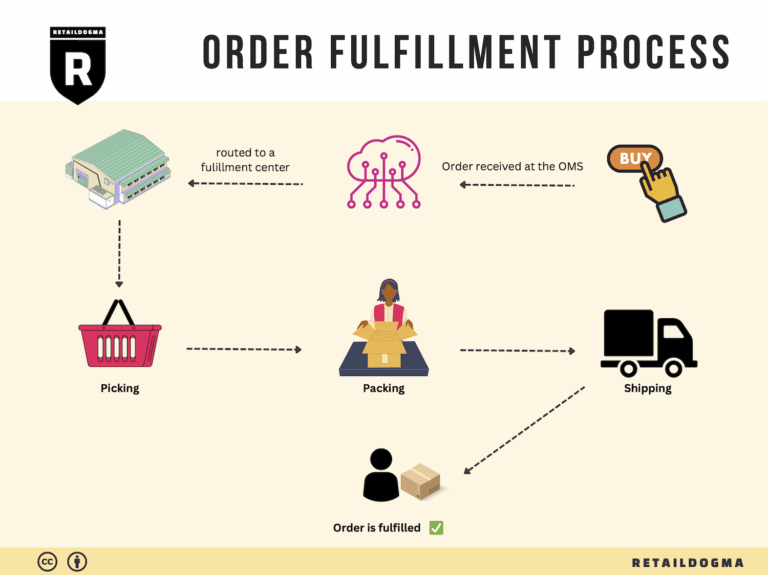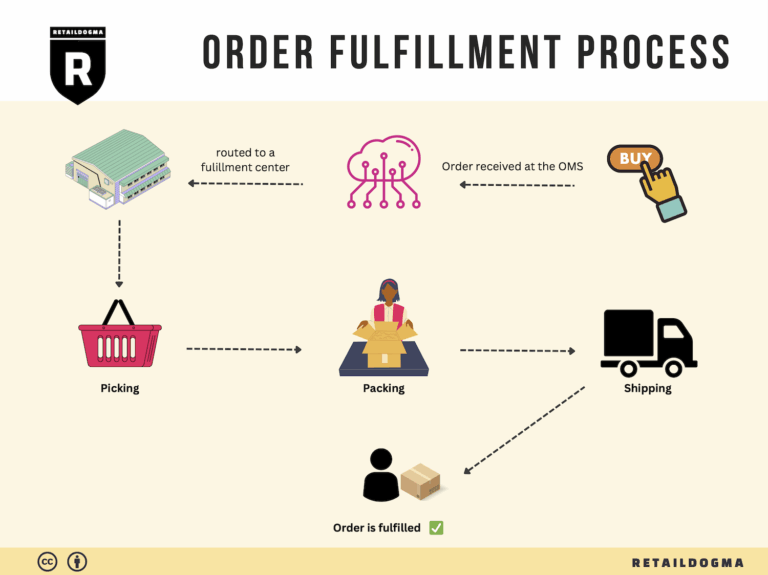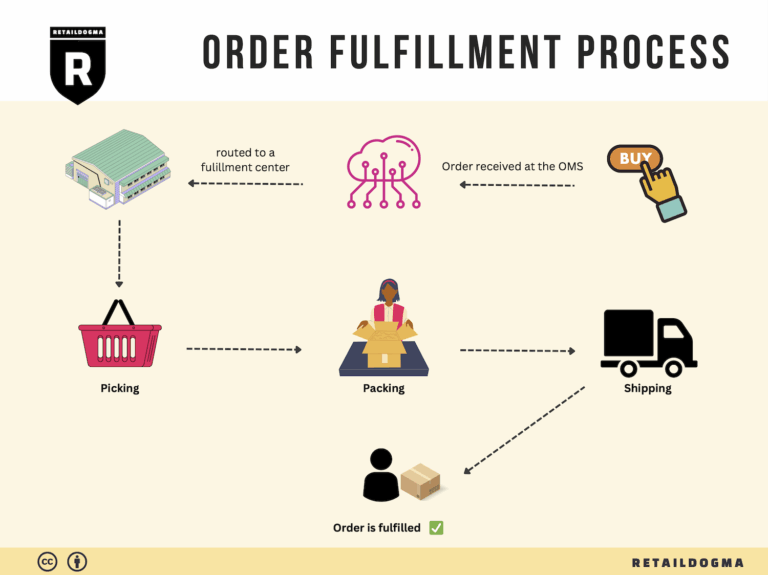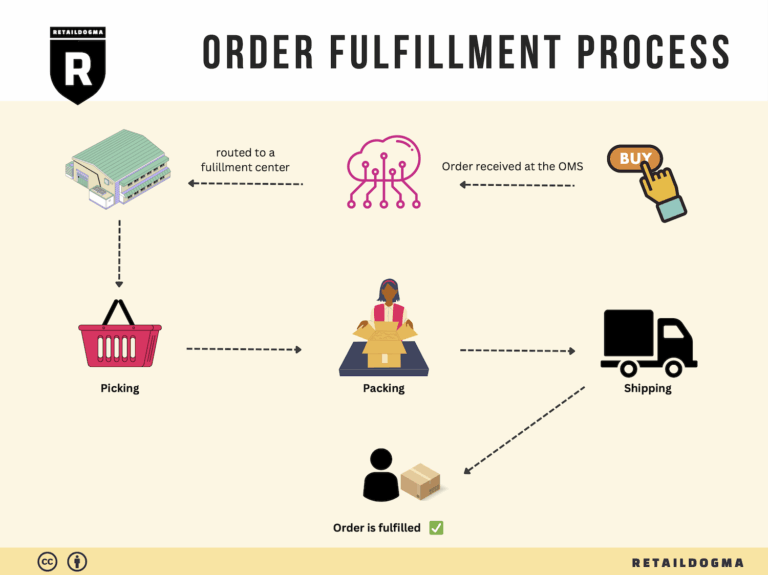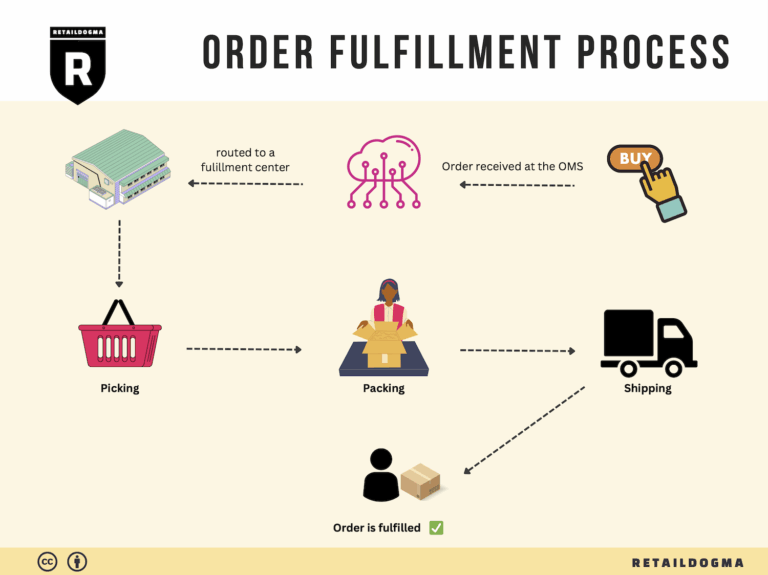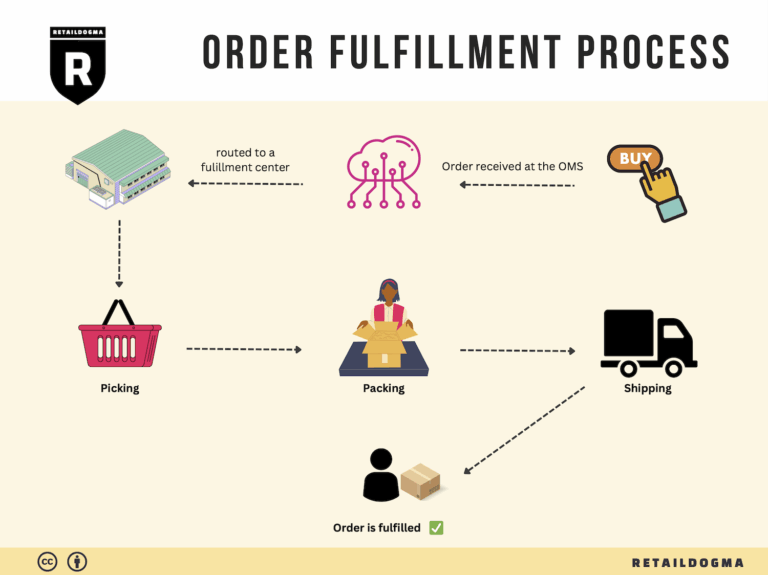Ecommerce Fulfillment Services: The Ultimate Guide (2025)
What is E-commerce Fulfillment? An Introduction for Growing Businesses
Understanding E-commerce Fulfillment: A Path to Growth
As your e-commerce business begins to flourish, you may find yourself grappling with the daunting tasks of packing and shipping orders. The excitement of increasing sales can quickly become overshadowed by the operational complexities of fulfilling those orders efficiently. This is where e-commerce fulfillment comes into play, serving as a critical backbone for businesses aiming to scale their operations.
At its core, fulfillment is the process of getting a product from your warehouse—or a partner facility—into the hands of your customers. This encompasses everything from inventory management and order processing to packing and shipping. For growing businesses, understanding and optimizing this process is vital to maintaining customer satisfaction and supporting sales growth.
In this guide, we will delve into various fulfillment models that can streamline your operations. You will learn about Third-Party Logistics (3PL) providers, which allow you to outsource your logistics, and Fulfillment by Amazon (FBA), a popular option for leveraging Amazon’s extensive network to reach customers quickly. Each model has its unique advantages and challenges, making it essential to choose one that aligns with your business goals.
We will also explore core fulfillment services, including inventory storage, order management, and shipping solutions. Understanding these services will help you identify what you need from a fulfillment partner to ensure smooth operations.
Choosing the right fulfillment partner is another critical aspect we’ll cover. Factors such as location, technology integration, service levels, and customer support are all vital considerations that can influence your decision. The right partner can not only enhance your operational efficiency but also contribute to a better customer experience.

Finally, we will address pricing structures associated with different fulfillment options. Understanding the cost implications will enable you to make informed financial decisions that support your business’s growth trajectory.
The goal of this guide is to empower you, the business owner or operations manager, with the knowledge necessary to make smart decisions about your logistics strategy. By optimizing your fulfillment processes, you can focus on scaling your sales and enhancing your customer experience, paving the way for sustainable growth in the competitive e-commerce landscape.
What You’ll Learn In This Guide
- What is E-commerce Fulfillment? An Introduction for Growing Businesses
- The Order Fulfillment Process: From ‘Buy’ Button to Customer’s Door
- Comparing Fulfillment Models: In-House vs. 3PL vs. Dropshipping
- A Deep Dive into Amazon FBA: Pros, Cons, and Who It’s For
- Core Services Offered by Fulfillment Centers
- How to Choose a Fulfillment Partner: A 6-Point Checklist
- Understanding Fulfillment Pricing: A Breakdown of Common Fees
- Frequently Asked Questions (FAQs) about Fulfillment
- Conclusion: Is Outsourcing Fulfillment the Right Move for Your Business?
- Important Disclaimer
The Order Fulfillment Process: From ‘Buy’ Button to Customer’s Door
1. Receiving Inventory
The first step in the order fulfillment process is receiving inventory. This step involves the acceptance of products from suppliers into the fulfillment center. Upon arrival, each shipment is checked against the purchase order to ensure that the correct quantities and items have been delivered. This is crucial for maintaining accurate inventory levels and preventing stock discrepancies.
Key terms associated with this step include SKU (Stock Keeping Unit), which is a unique identifier for each product. SKUs facilitate efficient tracking and management of inventory. By implementing a robust receiving process, businesses can ensure that they have the necessary stock on hand to meet customer demand, reducing the risk of stockouts and lost sales.
2. Warehouse Storage
Once inventory is received and verified, the next step is warehouse storage. This process involves placing products in designated storage locations within the fulfillment center. The layout of the warehouse is designed to optimize space and improve picking efficiency. Products are often organized based on their SKU, size, and demand frequency to streamline the picking process.
Proper warehouse storage is vital because it affects the speed and accuracy of order fulfillment. Utilizing warehouse management systems (WMS) can enhance this process by providing real-time inventory tracking and location management. Efficient storage solutions not only reduce retrieval times but also help in maintaining a systematic approach to inventory management, ensuring that products are readily available when orders come in.
3. Order Picking
Order picking is the process of selecting items from the warehouse to fulfill customer orders. When a customer places an order, a pick list is generated, detailing the items and their locations within the warehouse. Warehouse staff then follow this list to gather the required products.
This step is critical for ensuring that the correct items are shipped to customers, which directly impacts customer satisfaction and return rates. Key terms associated with this process include pick lists, which help streamline the picking operation. Implementing efficient picking methods, such as batch picking or zone picking, can significantly enhance productivity and reduce the time it takes to fulfill orders.
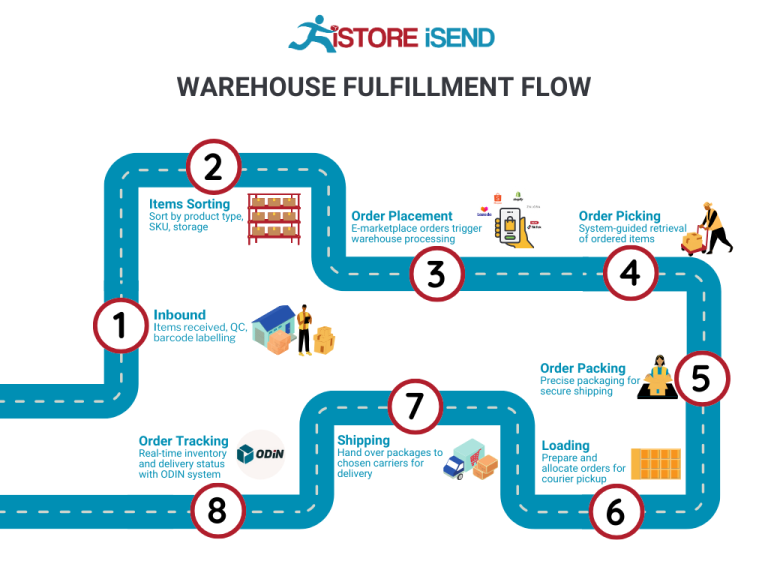
4. Order Packing
After items have been picked, they move on to the order packing stage. This involves securely packaging the products for shipment, ensuring they are protected during transit. Proper packing also includes labeling the packages with shipping information and any necessary documentation.
Order packing is essential for minimizing damage during shipping and enhancing the customer experience. A key term here is packaging materials, which can range from boxes and bubble wrap to void fill materials. Effective packing strategies can reduce shipping costs and improve delivery times. Moreover, utilizing branded packaging can also enhance brand visibility and customer satisfaction, as it reflects professionalism and attention to detail.
5. Shipping & Delivery
The final step in the order fulfillment process is shipping and delivery. Once the orders are packed, they are dispatched to various carriers for delivery to customers. This stage includes generating shipping labels, choosing the appropriate shipping method, and scheduling pickups or drop-offs with carriers.
Shipping and delivery are crucial for maintaining customer satisfaction, as timely delivery is often a key determinant in customer loyalty. A key term associated with this step is shipping carriers, which may include services like UPS, FedEx, or the United States Postal Service. By leveraging multiple carriers, businesses can optimize shipping costs and delivery times, ensuring that orders arrive at customers’ doors quickly and reliably.
In summary, understanding and effectively managing each of these five steps in the order fulfillment process is vital for e-commerce businesses aiming to scale their operations. By focusing on efficiency and accuracy at every stage—from receiving inventory to shipping and delivery—businesses can enhance customer satisfaction, reduce costs, and improve overall operational effectiveness.
Comparing Fulfillment Models: In-House vs. 3PL vs. Dropshipping
Fulfillment Model Comparison
| Model | Who Handles Inventory | Best For (Business Stage) | Key Advantage | Key Disadvantage |
|---|---|---|---|---|
| In-House Fulfillment | The business itself | Established businesses | Full control over inventory and shipping | High overhead costs and resource-intensive |
| Third-Party Logistics (3PL) | A third-party logistics provider | Growing businesses | Scalability and expertise in logistics | Less control over inventory and potential delays |
| Dropshipping | Suppliers or manufacturers | Startups and small businesses | Low initial investment and minimal risk | Lower profit margins and reliance on suppliers |
In-House Fulfillment
In-house fulfillment refers to the practice where a business manages its own storage, packing, and shipping operations. This model is typically adopted by established businesses that have sufficient resources and a steady volume of orders. One of the key advantages of in-house fulfillment is the level of control it affords; businesses can oversee every aspect of the fulfillment process, from inventory management to shipping times. This control can lead to enhanced customer satisfaction, as businesses can implement their own quality checks and ensure that orders are fulfilled according to their standards. However, managing fulfillment in-house can also lead to significant overhead costs, including warehouse space, staffing, and technology investments. Additionally, as order volumes grow, the operational complexity can become overwhelming, potentially diverting attention from core business functions.
Third-Party Logistics (3PL)
Third-party logistics (3PL) involves outsourcing fulfillment operations to a specialized provider. This model is especially beneficial for growing businesses that require scalability without the need to invest heavily in infrastructure. 3PL providers bring expertise in logistics, allowing businesses to tap into established networks for shipping, warehousing, and inventory management. One of the primary advantages of using a 3PL is the ability to scale operations quickly; businesses can adjust their logistics needs based on fluctuating demand without incurring the fixed costs associated with in-house fulfillment. However, one of the downsides is the loss of direct control over inventory and fulfillment processes. Businesses may face challenges with delays or errors that stem from the 3PL provider, which can impact customer satisfaction. Additionally, communication issues can arise if the 3PL does not align closely with the business’s operational goals.
Dropshipping
Dropshipping is a fulfillment model where a retailer sells products without holding inventory. Instead, when a retailer receives an order, they purchase the item from a third-party supplier who ships it directly to the customer. This model is particularly appealing for startups and small businesses due to its low initial investment and minimal financial risk. Since retailers do not need to manage inventory or worry about warehousing, they can focus on marketing and sales. However, dropshipping has its drawbacks; profit margins tend to be lower compared to other fulfillment models, as retailers must pay the supplier’s price plus shipping. Additionally, reliance on suppliers can lead to issues such as stock shortages or shipping delays, which can negatively affect customer experience. Retailers must also navigate the complexities of managing multiple suppliers and ensuring consistent product quality, which can complicate operations.
Conclusion
When evaluating fulfillment models, e-commerce businesses must carefully consider their specific needs, resources, and growth aspirations. In-house fulfillment offers control but requires significant investment, while 3PL provides scalability with the trade-off of reduced oversight. Dropshipping minimizes financial risk, making it ideal for newcomers, but it can lead to challenges with margins and customer satisfaction. Each model has its unique advantages and disadvantages, and the right choice will depend on the business’s stage, operational capabilities, and long-term goals.
A Deep Dive into Amazon FBA: Pros, Cons, and Who It’s For
Understanding Fulfillment by Amazon (FBA)
Fulfillment by Amazon (FBA) is a service provided by Amazon that allows businesses to store their products in Amazon’s warehouses. This service handles storage, packaging, shipping, and customer service for these products, making it an attractive option for e-commerce businesses looking to scale efficiently. FBA enables sellers to leverage Amazon’s vast logistics network, ensuring that orders are processed quickly and reliably.
When a customer purchases a product listed through FBA, Amazon takes care of the entire fulfillment process. This includes picking the product from the warehouse, packaging it, shipping it to the customer, and handling any customer service inquiries related to the order. Sellers using FBA also benefit from Amazon’s customer trust, as products are marked with the Prime badge, indicating faster shipping options.
How FBA Works
-
Setting Up FBA: Sellers begin by creating an Amazon seller account and enrolling in the FBA program. They then prepare their products according to Amazon’s guidelines and ship them to designated Amazon fulfillment centers.
-
Storage: Once the products arrive at an Amazon fulfillment center, they are stored until sold. Amazon manages inventory levels and notifies sellers when stock is running low.
-
Order Processing: When a customer places an order, Amazon picks the item from its inventory, packages it, and ships it directly to the customer. Sellers can monitor their inventory and sales through the Amazon Seller Central dashboard.
-
Customer Service: Amazon provides customer service for FBA orders, including handling returns and refunds. This allows sellers to focus on other aspects of their business while Amazon manages post-sale processes.
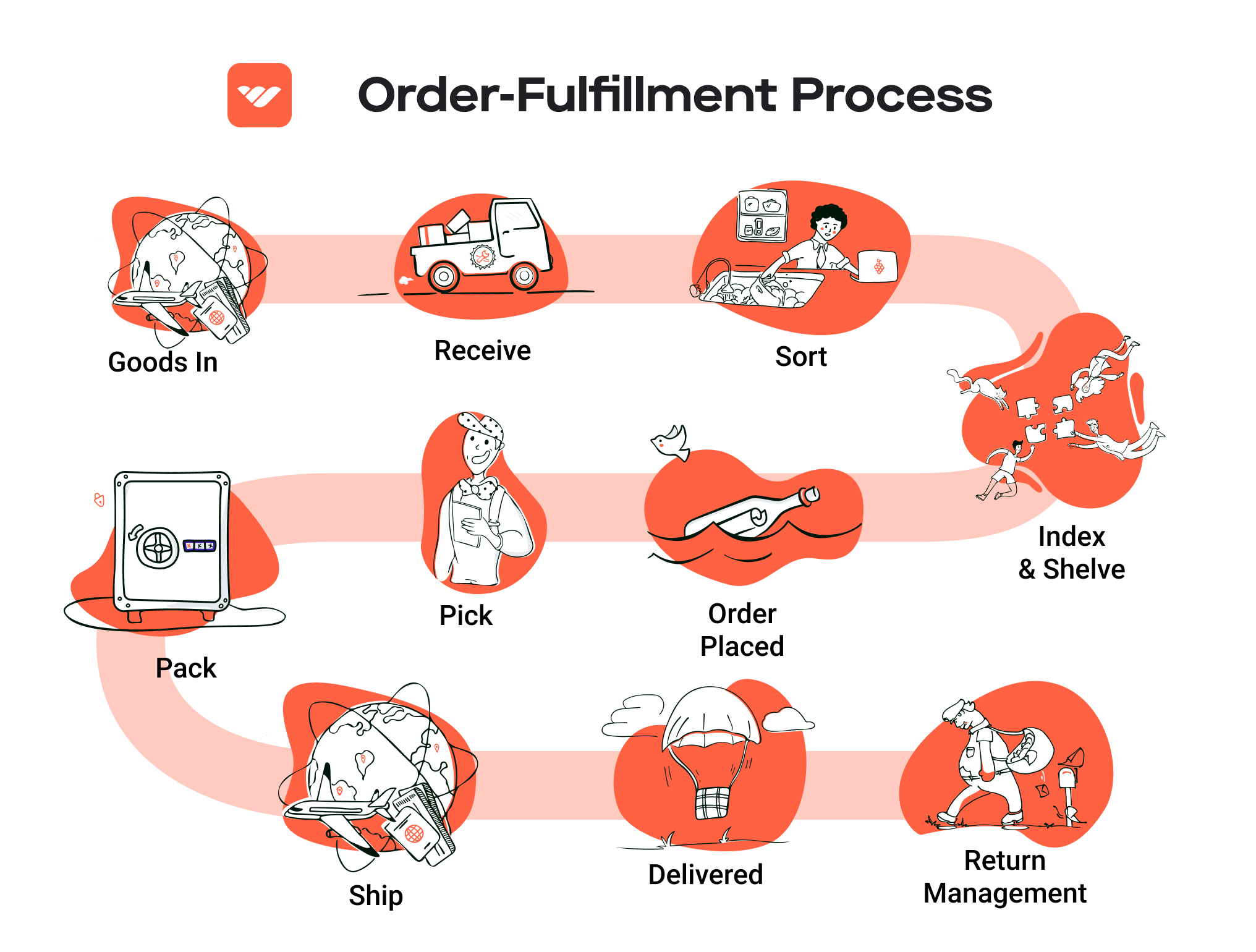
-
Fees: Sellers are charged fees based on storage space used and the number of units sold. These fees cover the costs associated with storage, order fulfillment, customer service, and returns.
Pros of Fulfillment by Amazon (FBA)
-
Prime Eligibility: Products fulfilled through FBA are eligible for Amazon Prime, which offers customers free two-day shipping. This can significantly increase sales, as Prime members are often more likely to purchase products that qualify for fast shipping.
-
Customer Trust: Amazon is a reputable platform, and customers are generally more inclined to trust products that are fulfilled by Amazon. This trust can lead to higher conversion rates and repeat purchases.
-
Multi-Channel Fulfillment: FBA allows sellers to fulfill orders not just from Amazon, but also from other sales channels such as their own websites or eBay. This flexibility can streamline operations and improve efficiency.
-
Scalability: FBA enables sellers to scale their businesses without the need for significant investment in logistics infrastructure. Sellers can focus on product development and marketing while Amazon handles fulfillment.
-
Inventory Management: Amazon provides tools and resources for inventory management, helping sellers track stock levels and sales trends effectively.
Cons of Fulfillment by Amazon (FBA)
-
High Fees: While FBA offers many benefits, it also comes with significant costs. Sellers are charged for storage space and fulfillment services, which can add up quickly, especially for low-margin products.
-
Strict Inventory Rules: Amazon has specific requirements for inventory management, including labeling, packaging, and shipping standards. Failure to comply with these rules can lead to additional fees or penalties.
-
Commingling Risks: FBA allows for commingling of inventory, meaning that sellers’ products may be mixed with those of other sellers. This can lead to issues such as lost or damaged items and complicates the return process if a customer returns a product that does not belong to the seller.
-
Less Control Over Fulfillment: When using FBA, sellers relinquish control over the fulfillment process. This can be a disadvantage for businesses that prefer to manage their own logistics.
-
Complex Return Process: While Amazon handles returns for FBA sellers, the process can sometimes be complex, particularly for items returned in poor condition or those that have been opened.
Who is FBA Best For?
Fulfillment by Amazon is best suited for e-commerce businesses that want to scale rapidly and efficiently without the overhead of managing their own logistics. It is particularly advantageous for:
-
Small to Medium-Sized Sellers: Businesses with limited resources that want to take advantage of Amazon’s infrastructure without investing heavily in warehousing and fulfillment.
-
Brands with High Demand Products: Sellers with products that have proven demand and can benefit from the Prime shipping advantage to increase sales velocity.
-
Entrepreneurs Looking to Diversify: Those who want to sell across multiple platforms but prefer to centralize their fulfillment process through Amazon.
-
Sellers with Seasonal Products: Businesses that experience fluctuating demand may find FBA helpful for scaling operations during peak seasons without long-term commitments to storage.
In conclusion, FBA can be a powerful tool for e-commerce sellers looking to enhance their logistics capabilities and expand their market reach. However, it’s essential for businesses to weigh the pros and cons carefully and consider their unique operational needs before fully committing to the program.
Core Services Offered by Fulfillment Centers
Inventory Management & Warehousing
Inventory management and warehousing are foundational services provided by fulfillment centers. This involves the systematic tracking, storing, and organizing of products that e-commerce businesses sell. Fulfillment centers utilize advanced inventory management systems to maintain accurate counts of stock levels, monitor product movements, and forecast future inventory needs.
The primary benefit of effective inventory management is the reduction of stockouts and overstock situations. For e-commerce businesses, this means avoiding lost sales due to unavailable products while minimizing excess inventory that can lead to increased holding costs. By leveraging a fulfillment center’s expertise, businesses can ensure that their inventory is optimized for demand, allowing for smoother operations and improved cash flow. Additionally, fulfillment centers often provide detailed reporting, enabling businesses to make data-driven decisions regarding their inventory strategies.
Pick and Pack Services
Pick and pack services refer to the process of selecting products from inventory and packaging them for shipment. This process is crucial for e-commerce businesses, especially those with a wide variety of products or high order volumes. Fulfillment centers employ sophisticated picking systems that often utilize barcodes and automated technologies to ensure accuracy and efficiency in order fulfillment.
The benefits of efficient pick and pack services are manifold. First, they streamline the order fulfillment process, significantly reducing the time from order placement to shipment. Fast order processing enhances customer satisfaction and can lead to repeat business. Moreover, fulfillment centers are equipped to handle complex orders, such as those requiring multiple items or special packaging, which can be challenging for smaller businesses. By outsourcing these tasks, e-commerce businesses can focus on core competencies like marketing and customer service, while leaving logistics to the experts.
Kitting and Assembly
Kitting and assembly involve grouping multiple products into a single package or kit, which is often done to create bundled offers or promotional products. This service is particularly beneficial for businesses that sell complementary items or need to prepare products for specific events or seasons. Fulfillment centers can efficiently manage the assembly of these kits, ensuring that the right items are included and packaged properly.
The advantage of kitting and assembly services lies in their ability to enhance product offerings and improve sales. For example, a business selling fitness equipment might bundle a yoga mat with a water bottle and instructional guide. This not only adds value for the customer but also simplifies the purchasing decision. Additionally, by utilizing fulfillment centers for kitting, businesses can save time and resources, allowing them to scale their operations and respond quickly to market trends without the need for extensive in-house labor.
Returns Management (Reverse Logistics)
Returns management, or reverse logistics, is the process of handling returned products. This service is critical for e-commerce businesses, as return rates can be significant, particularly in sectors like fashion and electronics. Fulfillment centers provide structured processes for inspecting, restocking, or disposing of returned items, which helps maintain inventory accuracy and customer satisfaction.
The primary benefit of efficient returns management is the preservation of customer loyalty. A smooth and transparent returns process can turn a potentially negative experience into a positive one, encouraging customers to shop again. Furthermore, fulfillment centers can analyze return data to identify trends and issues with specific products, enabling businesses to make necessary adjustments in their offerings or marketing strategies. By outsourcing returns management, e-commerce businesses can also reduce operational burdens and focus on growth initiatives.
Conclusion
In summary, the core services offered by fulfillment centers—inventory management and warehousing, pick and pack services, kitting and assembly, and returns management—are essential for e-commerce businesses looking to scale efficiently. By leveraging these services, businesses can improve operational efficiency, enhance customer satisfaction, and ultimately drive sales growth. As the e-commerce landscape continues to evolve, partnering with a fulfillment center can provide a strategic advantage, allowing businesses to adapt quickly to changing market demands while maintaining focus on their core operations.
How to Choose a Fulfillment Partner: A 6-Point Checklist
Location & Warehouse Network
Importance: The geographical location of your fulfillment partner’s warehouses is crucial for optimizing shipping times and costs. A partner with strategically placed facilities can ensure faster delivery to your customers, particularly if they have multiple warehouses across key regions.
Questions to Ask:
– Where are your fulfillment centers located, and how does that impact shipping times to my primary customer base?
– Do you have a network of warehouses, and how does that affect your delivery capabilities?
– What is the average shipping time for orders processed through your facilities?
Technology & Integrations
Importance: Efficient fulfillment relies heavily on robust technology that can integrate seamlessly with your e-commerce platform. A partner with advanced technology can automate processes, reduce errors, and provide real-time tracking, enhancing the overall customer experience.
Questions to Ask:
– What technology do you use for inventory management, order processing, and shipping?
– Can your system integrate with my e-commerce platform (e.g., Shopify, WooCommerce, Amazon)?
– Do you provide real-time tracking for both me and my customers, and how is that information delivered?
Specializations (e.g., Cold Storage, Oversized Items)
Importance: Depending on the nature of your products, you may need a fulfillment partner that specializes in certain types of storage and handling. For example, if you sell perishable goods, cold storage capabilities are essential. If you deal with oversized items, you’ll need a partner equipped to handle such products.
Questions to Ask:
– Do you have any specialized facilities or equipment for handling my type of products (e.g., cold storage, oversized items)?
– What processes do you have in place to ensure proper handling and storage of specialized items?
– Can you accommodate seasonal fluctuations in inventory or product types?
Scalability & Capacity
Importance: As your business grows, your fulfillment needs will likely change. Partnering with a provider that can scale their services in line with your growth is vital. This includes having the capacity to handle increased order volumes and the flexibility to adapt to market changes.
Questions to Ask:
– How do you handle scalability in terms of increasing order volumes?
– What is your maximum capacity for handling orders, and how quickly can you ramp up if necessary?
– Do you have contingency plans in place for seasonal spikes in demand?
Pricing and Contracts
Importance: Understanding the pricing structure and contract terms is essential for budgeting and avoiding unexpected costs. Transparency in pricing will help you assess whether a fulfillment partner is a good fit for your financial model.
Questions to Ask:
– What is your pricing model (e.g., per order, per item, monthly fees)?
– Are there any hidden fees (e.g., storage fees, long-term storage fees, pick and pack fees)?
– What are the terms of your contracts, and is there flexibility for renegotiation as my needs change?
Customer Support & Reviews
Importance: The level of customer support provided by your fulfillment partner can greatly impact your business operations. Responsive and helpful customer service can resolve issues quickly, ensuring minimal disruption to your order fulfillment process. Additionally, researching reviews can provide insights into the partner’s reliability and performance.
Questions to Ask:
– What type of customer support do you offer (e.g., dedicated account manager, 24/7 support)?
– How do you handle issues that arise during the fulfillment process (e.g., lost packages, delays)?
– Can you provide references or case studies from businesses similar to mine?
Conclusion
Choosing the right fulfillment partner is a critical decision for e-commerce businesses looking to scale. By carefully evaluating potential partners against this checklist, you can make an informed choice that aligns with your operational needs and growth ambitions. Each of these points plays a significant role in ensuring that your fulfillment operations are efficient, cost-effective, and capable of meeting customer expectations.
Remember, the right partner will not only support your current logistics needs but also evolve with your business as it grows. Take the time to ask the right questions and conduct thorough research to find a fulfillment partner that aligns with your vision for success.
Understanding Fulfillment Pricing: A Breakdown of Common Fees
Initial Setup Fees
When partnering with an Amazon Fulfillment Center, businesses often encounter initial setup fees. These charges typically cover the costs associated with integrating your inventory into the fulfillment system. The setup process may involve creating an account, configuring your product listings, and setting up shipping preferences.
Calculation: Initial setup fees can vary based on the complexity of your inventory and the level of customization required. Some fulfillment centers may charge a flat fee, while others may base the cost on the number of SKUs or the time taken to complete the setup. It’s essential to clarify these fees upfront to avoid surprises.
Receiving Fees
Receiving fees are charged when the fulfillment center takes delivery of your inventory. This fee covers the labor and resources required to unload, inspect, and store your products.
Calculation: Typically, receiving fees are calculated based on the number of units received or the total weight of the shipment. Some centers may also have a minimum charge for smaller shipments. Understanding how these fees are structured is crucial, especially if your business involves frequent shipments.
Storage Fees (per pallet/bin)
Storage fees apply to the space your inventory occupies within the fulfillment center. These fees can be a significant part of your overall fulfillment costs, especially for businesses with large inventories.
Calculation: Storage fees are generally calculated on a monthly basis and can be charged per pallet or per bin. The cost may vary based on the type of storage you require—standard versus long-term storage. Long-term storage fees often apply to products that remain in the facility for an extended period (usually over 365 days). Businesses should monitor their inventory turnover to minimize these fees.
Pick & Pack Fees (per item/order)
Pick and pack fees are incurred each time an order is processed. This fee covers the labor involved in retrieving items from storage, packing them for shipment, and preparing them for dispatch.
Calculation: These fees are usually calculated per item or per order, depending on how the fulfillment center structures its pricing. For example, a fulfillment center may charge a flat fee for picking and packing a single order, plus an additional fee for each item included in that order. Understanding the pick and pack fee structure can help businesses optimize their order sizes and reduce costs.
Shipping Fees
Shipping fees are a critical component of fulfillment pricing, as they encompass the costs associated with transporting your products to customers. This fee can vary significantly based on the shipping method, destination, and weight of the package.
Calculation: Shipping fees are typically calculated based on the carrier’s rates, which may include considerations such as package dimensions, weight, and delivery speed. Many fulfillment centers have partnerships with shipping carriers, allowing them to offer discounted rates. Businesses should compare these shipping options to determine the most cost-effective solution for their needs.
Tips for Getting an Accurate Quote
-
Provide Detailed Inventory Information: When requesting a quote, be as specific as possible about your inventory—include the types of products, dimensions, weights, and anticipated order volumes. This information will help fulfillment centers provide a more accurate estimate.
-
Understand Your Needs: Assess your business model and order fulfillment requirements. Consider factors like peak seasons, average order sizes, and storage needs. This understanding will help you negotiate better pricing.
-
Ask About Volume Discounts: Many fulfillment centers offer discounts based on the volume of business you bring. Inquire about tiered pricing models that could lower your overall costs as your order volume increases.
-
Clarify All Fees: Ensure you have a clear understanding of all potential fees, including those that may be charged for returns, inventory discrepancies, or additional services such as kitting or labeling.
-
Get Multiple Quotes: Don’t settle for the first quote you receive. Compare offers from different fulfillment centers to find the best balance between cost and service quality.
By understanding these common fulfillment pricing models and following these tips, e-commerce businesses can make informed decisions that enhance their operations and improve their bottom line.
Frequently Asked Questions (FAQs) about Fulfillment
1. What is the address of Amazon Fulfillment Center TPA4?
The Amazon Fulfillment Center TPA4 is located at 8727 Harney Rd, Temple Terrace, FL 33637, United States. This facility plays a crucial role in Amazon’s logistics network, ensuring efficient storage, packing, and shipping of products.
2. What services does Amazon Fulfillment Center TPA4 provide?
Amazon Fulfillment Center TPA4 offers a range of services including storage of inventory, order picking and packing, shipping, and customer service support for returns and refunds. It is designed to optimize the fulfillment process for e-commerce businesses utilizing Amazon’s platform.
3. How does Amazon Fulfillment Center TPA4 handle damaged items?
The fulfillment center has established policies for managing damaged items. Customers are encouraged to contact Amazon’s customer service for guidance on returns and refunds related to damaged products.
4. What are the typical challenges faced by Amazon Fulfillment Center TPA4?
Common challenges include delays in package deliveries and operational issues such as lost items. These problems can impact customer satisfaction and the overall efficiency of the fulfillment process. Regular monitoring of tracking information is advisable for timely updates.
5. What is the difference between a warehouse and a fulfillment center?
A warehouse is primarily used for storage of goods, while a fulfillment center specializes in processing and shipping orders directly to customers. Fulfillment centers are equipped with advanced logistics systems to handle picking, packing, and shipping efficiently, often integrating with e-commerce platforms.
6. What is a 3PL (Third-Party Logistics)?
A 3PL is a service provider that manages logistics and supply chain functions on behalf of another company. This can include warehousing, order fulfillment, transportation, and inventory management. Businesses often partner with 3PLs to streamline operations and focus on core competencies.
7. How much do fulfillment services cost?
Costs for fulfillment services can vary widely based on factors such as order volume, storage space required, and specific services utilized (e.g., packing, shipping). Generally, businesses can expect to pay a per-order fee, a monthly storage fee, and additional charges for services like labeling or returns processing.
8. Can I track my orders processed through Amazon Fulfillment Center TPA4?
Yes, customers can track their orders through the Amazon website or app. Tracking information is provided once an order has been shipped, allowing customers to monitor delivery status in real-time.
9. How does Amazon Fulfillment Center TPA4 ensure timely deliveries?
The center employs a sophisticated logistics system that includes automated processes and a dedicated workforce to manage high volumes of orders. Their focus on operational efficiency and speed is crucial for maintaining timely deliveries to customers.
10. Are there opportunities for businesses to collaborate with Amazon Fulfillment Center TPA4?
Yes, e-commerce businesses can partner with Amazon through the Fulfillment by Amazon (FBA) program. This allows sellers to store their products at Amazon’s fulfillment centers, leveraging Amazon’s extensive logistics network to fulfill orders quickly and efficiently.
Conclusion: Is Outsourcing Fulfillment the Right Move for Your Business?
Evaluating the Benefits of Outsourcing Fulfillment
Outsourcing fulfillment can be a transformative strategy for e-commerce businesses looking to scale efficiently. By leveraging a fulfillment service, such as Amazon’s Fulfillment by Amazon (FBA), businesses can save significant time and resources. This allows owners and managers to focus on core activities like marketing, product development, and customer engagement, rather than getting bogged down in logistics and shipping details.
One of the most compelling advantages of using a fulfillment service is scalability. As your sales grow, so do the demands on your logistics. Partnering with a fulfillment center enables you to easily scale operations without the headache of managing warehousing, staffing, and order processing. This flexibility can be crucial during peak seasons or unexpected surges in demand, ensuring you meet customer expectations without compromising service quality.
Moreover, fulfillment centers bring specialized expertise to the table. They are equipped with the latest technology and best practices in logistics, which not only enhances efficiency but also reduces the likelihood of errors. This expertise can translate into better inventory management, optimized shipping routes, and improved customer satisfaction through timely deliveries.
However, the choice of fulfillment partner is critical to your growth strategy. A misaligned partner can hinder your operations instead of helping them. It’s essential to conduct thorough research, check reviews, and assess the capabilities of potential partners to ensure they align with your business goals.
Take Action
As you consider the potential of outsourcing fulfillment, take a moment to audit your current shipping process. Evaluate whether your existing setup is meeting your business needs and customer expectations. If you find gaps or inefficiencies, it may be time to explore fulfillment partnerships that can facilitate your growth and enhance your operational efficiency. Embrace the opportunity to streamline your logistics and focus on what truly drives your business forward.
Important Disclaimer
⚠️ Important Disclaimer
The information in this guide is for educational purposes. Fulfillment services, pricing, and platform features change frequently. Always conduct your own due diligence and consult with providers directly before making business decisions.
